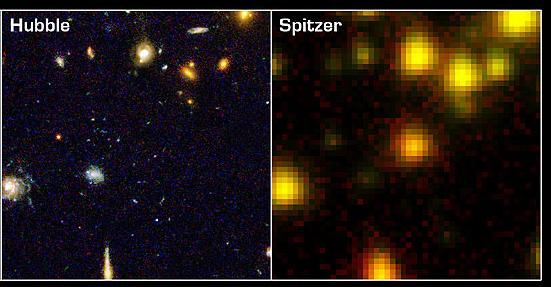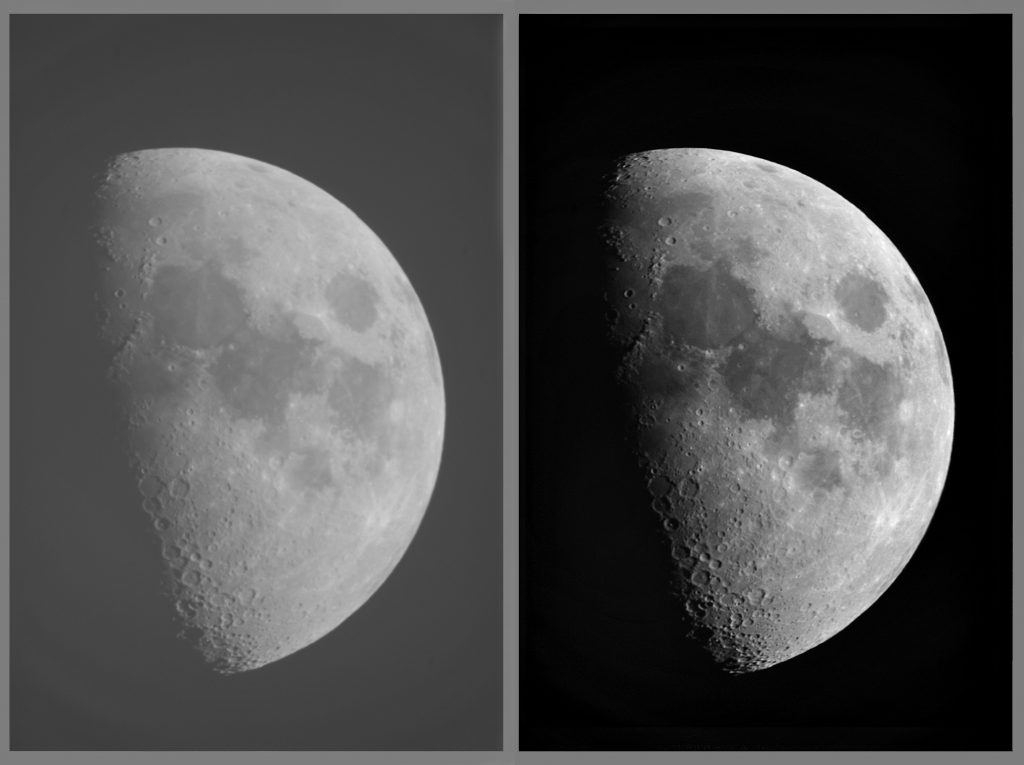Find Out Why Aperture Matters When Choosing a Scope
Aperture is a crucial factor when choosing the best telescope for viewing planets and galaxies because it directly impacts the telescope’s light-gathering ability and its ability to resolve fine details in celestial objects. The aperture of a telescope refers to the diameter of its main optical component, typically the primary mirror or lens.
Here’s why aperture is important:
Light Gathering Power
Aperture determines the amount of light a telescope can collect from distant celestial objects. Planets and galaxies are often very faint and distant, so a telescope with a larger aperture can gather more light and make these objects appear brighter and more detailed.

Example: Let’s compare two telescopes, Telescope A and Telescope B, each with a different aperture size, to understand the impact of Light Gathering Power on observing planets and galaxies.
Telescope A:
Aperture: 70mm
Focal Length: 700mm
Telescope B:
Aperture: 130mm
Focal Length: 1000mm
Explanation: Telescope A has an aperture of 70mm, while Telescope B has a larger aperture of 130mm. The aperture size directly affects the amount of light that each telescope can collect from celestial objects.
When observing planets and galaxies, more light gathering power is highly desirable because these objects are often faint and distant. The larger aperture of Telescope B enables it to gather significantly more light than Telescope A. As a result, celestial objects viewed through Telescope B will appear brighter and more detailed than those observed through Telescope A.
Observing Planets
Planets in our solar system are relatively bright compared to deep-sky objects like galaxies. However, they are still much smaller and more distant than stars. To observe fine details on planets, such as cloud bands, surface features, and planetary moons, telescopes with good light-gathering ability are essential. Telescope B, with its larger aperture, will provide sharper and more detailed views of planets compared to Telescope A.
Observing Galaxies
Galaxies are some of the most distant and faint objects in the universe. They often appear as faint smudges of light in the night sky. A telescope with a larger aperture, like Telescope B, will gather more light from these faint objects, allowing you to see more of their structure and detail. You may be able to observe spiral arms, dust lanes, and even hints of bright regions within the galaxies with Telescope B, while Telescope A might only show a faint and blurry blob.
Image Resolution
The larger the aperture, the higher the resolution of the telescope. Higher resolution allows you to discern finer details on planets, such as cloud bands on Jupiter or the Cassini Division in Saturn’s rings. Similarly, for galaxies, higher resolution can reveal more details in their structure, like spiral arms and core regions.

Example: Let’s compare two telescopes, Telescope X and Telescope Y, with different aperture sizes to illustrate the impact of Image Resolution on observing celestial objects.
Telescope X: Aperture: 60mm Focal Length: 600mm
Telescope Y: Aperture: 150mm Focal Length: 1200mm
Explanation:
- Image Resolution: Image Resolution refers to the ability of a telescope to reveal fine details in the observed image. A telescope with higher image resolution can distinguish between closely spaced objects or show finer features on a celestial body. The resolution of a telescope is influenced by its aperture size.
- Impact on Observing Planets: When observing planets, image resolution is crucial to discerning intricate features on their surfaces. Planets, especially the gas giants like Jupiter and Saturn, exhibit various details like cloud bands, atmospheric storms, and the Great Red Spot. Telescopes with higher image resolution can provide clearer and more detailed views of these features.
In our example, Telescope Y has a larger aperture compared to Telescope X. With its larger aperture, Telescope Y has higher image resolution, allowing it to display finer details on the surfaces of planets. For instance, Telescope Y might reveal more distinct bands and subtle color variations on Jupiter compared to Telescope X.
Impact on Observing Galaxies:
In the case of galaxies, higher image resolution helps reveal more structural details within these faint and distant objects. Galaxies often have intricate structures like spiral arms, dust lanes, and central bulges. Telescopes with better resolution can resolve more of these details, making the viewing experience more rewarding.
Telescope Y, with its larger aperture and higher image resolution, will show more structure and finer details within galaxies than Telescope X. You may be able to see the arms of spiral galaxies more clearly and discern individual star clusters within them, whereas Telescope X might only show a less-detailed and more blended view of the same galaxy.
Observing Fainter Objects
Galaxies and certain planetary features can be quite dim, especially if you want to explore fainter deep-sky objects beyond our solar system. A telescope with a larger aperture will enable you to see more of these dim objects.

Example: Let’s compare two telescopes, Telescope P and Telescope Q, with different aperture sizes to illustrate the impact of Observing Fainter Objects on stargazing.
Telescope P: Aperture: 80mm Focal Length: 800mm
Telescope Q: Aperture: 200mm Focal Length: 1000mm
Explanation:
- Observing Fainter Objects: Observing Fainter Objects refers to the ability of a telescope to detect and display celestial objects that are dimmer or more distant. Planets and bright objects can often be seen with smaller telescopes, but for observing faint galaxies and other deep-sky objects, a telescope with larger aperture becomes essential.
- Light Gathering Power and Image Brightness: As discussed earlier, a larger aperture results in higher Light Gathering Power. With Telescope Q having a larger aperture than Telescope P, it can collect more light from fainter objects, making them appear brighter and more visible.
- Advantages of Telescope Q: Telescope Q, with its larger aperture, excels at observing faint galaxies, nebulae, star clusters, and other deep-sky objects. These objects may be too dim to be seen clearly through Telescope P, but Telescope Q’s enhanced light-gathering capability allows you to explore a wider range of celestial wonders.
- Fainter Planets and Moons: While the primary focus of larger aperture telescopes is often on deep-sky objects, they can also reveal fainter details on planets and their moons. For example, the smaller and dimmer moons of Jupiter or Saturn may be more easily observed with Telescope Q, which can provide better contrast and image brightness.
- Limitations of Light Pollution: In urban or light-polluted areas, the skies are often brighter, making it difficult to observe faint celestial objects. However, Telescope Q’s larger aperture enables it to mitigate some of these challenges by gathering more light from the objects of interest, helping to overcome the effects of light pollution to some extent.
Contrast and Image Quality
Larger apertures provide better contrast and image quality. This is essential for differentiating faint details from background light or sky glow, especially when observing galaxies and other faint deep-sky objects.

Example: Let’s compare two telescopes, Telescope M and Telescope N, with different aperture sizes to illustrate the impact of Contrast and Image Quality on observing celestial objects.
Telescope M: Aperture: 90mm Focal Length: 900mm
Telescope N: Aperture: 150mm Focal Length: 1200mm
Explanation:
- Contrast and Image Quality: Contrast refers to the ability of a telescope to distinguish between light and dark regions in an observed image. Image Quality, on the other hand, refers to the sharpness, clarity, and level of detail that a telescope can deliver in its views. Both contrast and image quality are influenced by the telescope’s aperture size.
- Impact on Observing Planets: When viewing planets, high contrast and image quality are crucial for revealing fine details on their surfaces. Telescopes with better contrast can make subtle features, such as cloud bands, atmospheric disturbances, and planetary ring structures, more distinct and prominent. A telescope with good image quality provides crisp and sharp views, allowing you to appreciate the intricate details of the planets.
In our example, Telescope N has a larger aperture compared to Telescope M. With its larger aperture, Telescope N can achieve better contrast, making the details on planets appear clearer and more pronounced. The increased image quality of Telescope N further enhances the viewing experience, allowing you to see finer features on planets with greater clarity.
Impact on Observing Galaxies
For galaxies, high contrast and image quality are equally important. Galaxies often have subtle variations in brightness and intricate structures like spiral arms and dust lanes. Telescopes with better contrast and image quality can reveal more of these features, making the observation of galaxies more immersive and rewarding.
Telescope N, with its larger aperture, excels at delivering higher contrast and image quality, allowing you to see finer details and more structure within galaxies. On the other hand, Telescope M might produce images with slightly lower contrast and image sharpness, resulting in fewer visible details in the same galaxies.
Observing Under Different Conditions
The contrast and image quality provided by Telescope N are advantageous when observing under challenging conditions, such as light pollution or atmospheric turbulence. The larger aperture helps gather more light from faint celestial objects, and the improved image quality ensures that the details remain discernible even when observing from areas with less-than-ideal viewing conditions.
However, there are other considerations to keep in mind when selecting a telescope, such as its portability, weight, focal length, and the type of optical design (refractor, reflector, or compound) that suits your observing preferences and budget.
In summary, if you’re specifically interested in observing planets and galaxies by telescopes, choosing a telescope with a larger aperture will significantly enhance your observing experience by providing brighter, more detailed views of these celestial objects.
